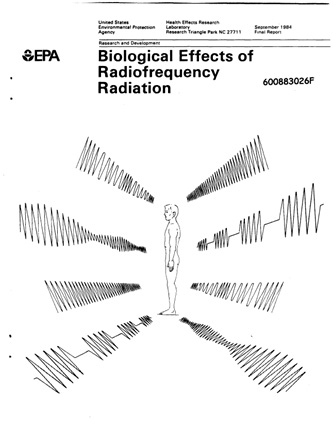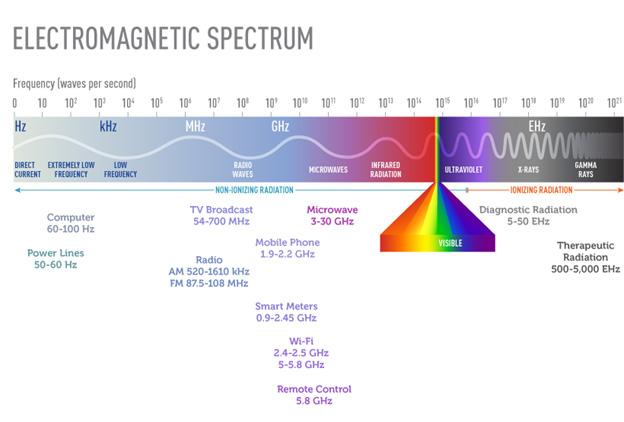Joseph R. Anticaglia, MD
Medical Advisory Board
Years ago, Mike, an electric worker in his mid-forties complained of headaches, dizziness, ringing in his ears, and being tired. He thought it was related to his job. He worked in an industrial park filled with pollution including being exposed to high and low frequency wave emissions. The low keys on the piano have different frequencies compared to the high keys (see glossary below).
Mike noticed that when he went on vacation, after several days, he felt better. Back on the job, the above complaints creeped back into his life. Physical examination was normal except for a mild, high tone hearing loss.
Rising interest in the Havana Syndrome made me flashback to Mike, and how of little help I was to him. I suggested he talk to the company’s human service department, or to his union representative, or EPA in ways to protect himself from harmful exposure to frequency waves. What does this have to do with the Havana syndrome?
Havana Syndrome (H. S.)
The Havana syndrome gained headlines as a result of alleged electromagnetic field weaponry (electroweapons) allegedly conducted by adversaries of the United States. These hostile operations have targeted U. S. diplomats, CIA officers and U. S. military stationed in various parts of the world. In addition, they have attacked family members, and embassy workers.
Over two hundred Americans have succumbed to the H. S. while working in different countries which include: China, Vietnam, Germany, Russia, Columbia, the United States and most recently, Serbia.
The Wall Street Journal reported in October of this year at least five U. S. families attached to the Bogota embassy in Columbia have experienced the Havana Syndrome. U. S. personnel and their workers have been singled out to suffer the adverse health consequences of this invisible electroweapon. Not everyone experiences the same symptoms.

Symptoms
In late 2016, the U. S. State Department personnel and embassy staff stationed in Havana, Cuba experienced a group of unexplained medical symptoms that has been labeled the Havana syndrome. At the same time, the Canadian embassy staffers based in Havana had a similar experience. A year later the American embassy staff in Guangzhou, China reported unexplained medical symptoms
The symptoms resemble those of a mild head injury or concussion. They include headache, vertigo, dizziness, ringing in the ears, feeling of pressure in the ears or head, visual difficulties, fatigue, and cognitive problems. Douglas S. Smith, MD at the University of Pennsylvania noted, the symptoms were, “similar to those found in persistent concussion syndrome, yet there was no evidence of blunt head trauma
Brain imaging studies on embassy workers who served in Cuba in late 2016 demonstrated a correlation between their symptoms and brain tissue damage.
Cause
One theory says the cause of H. S. is the use of a device that emits radiofrequency energy that causes the fluid in a person’s ear or brain to bubble that leads to air emboli damaging the ear and brain cells
Another theory says the radiofrequency waves (ultrasonic, microwaves) directly impact the integrity of the brain tissue. The waves interfere with the connections of the brain. They disrupt the brain’s chemical and electrical activities resulting in a rewiring of the brain’s connection with long term adverse health effects.
Treatment
There are limited options available to treat people with Havana syndrome. There’s symptomatic treatment, for example, for vertigo, nausea, and migraines. Alternative medicine such as art therapy, acupuncture, balance exercises and meditation has met with questionable success.
H. S. is real. It’s not psychosomatic. It’s debilitating. It’s not fatal. Brain scans correlate with U. S. embassy patients’ neurologic complaints. More work needs to be done to protect workers such as Mike who have been exposed to electric and magnetic fields. More work needs s to be done to de-mystify the Havana syndrome.
Glossary
Frequency is the number of times an event occurs per unit of time. For instance, a person’s heart may beat at a frequency of seventy beats per minute. Frequency can also be referred to as waves,- waves per second -such as light, radio and sound waves. The intensity, frequency and duration of exposure to certain frequencies can lead to adverse health effects.
References
- Ragini Verma, PhD; et al; Neuroimaging Findings in US Government Personnel With Possible Exposure to Directional Phenomena in Havana, Cuba; JAMA, July 23/30, 2019
- Naser Delghan and Shaham Taeb; Adverse Health Effects of Occupation exposure to radiofrequency radiation in surveillance radar operators; Indian Journal of Occupational and Environmental Medicine, 2013
- EPA Protecting Yourself from Radiation
- NIOSH, EMF’s (electromagnetic fields) in the Workplace; 1996
- Adam Entous, Jon Lee Anderson; The Mystery of the Havana Syndrome. New Yorker; November 9,2018
- OSHA; Radiofrequency and Microwave Radiation; U. S. Department of Labor
Addendum

This article is intended solely as a learning experience. Please consult your physician for diagnostic and treatment options.

